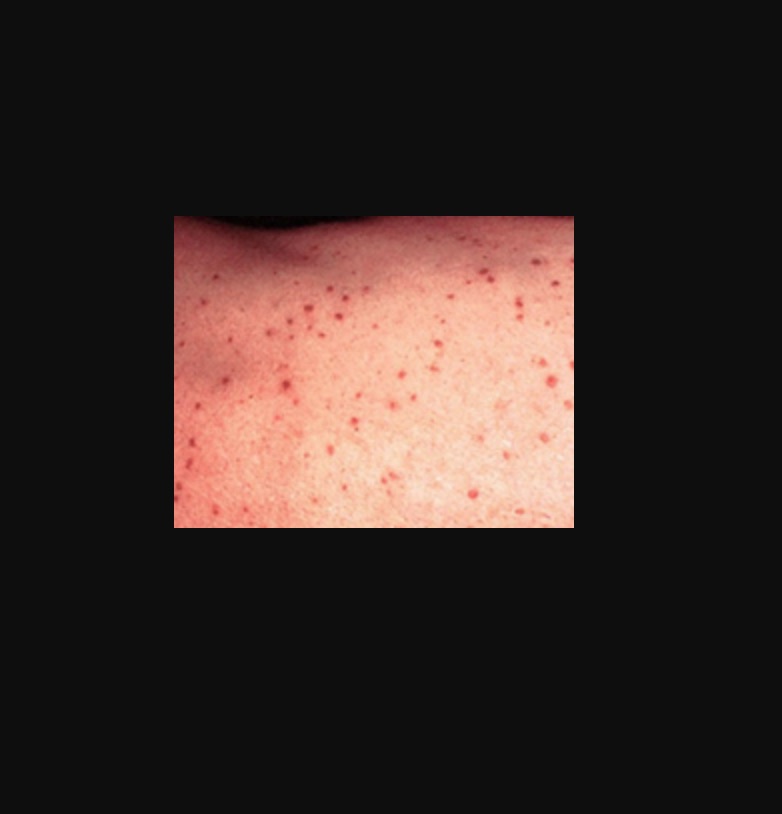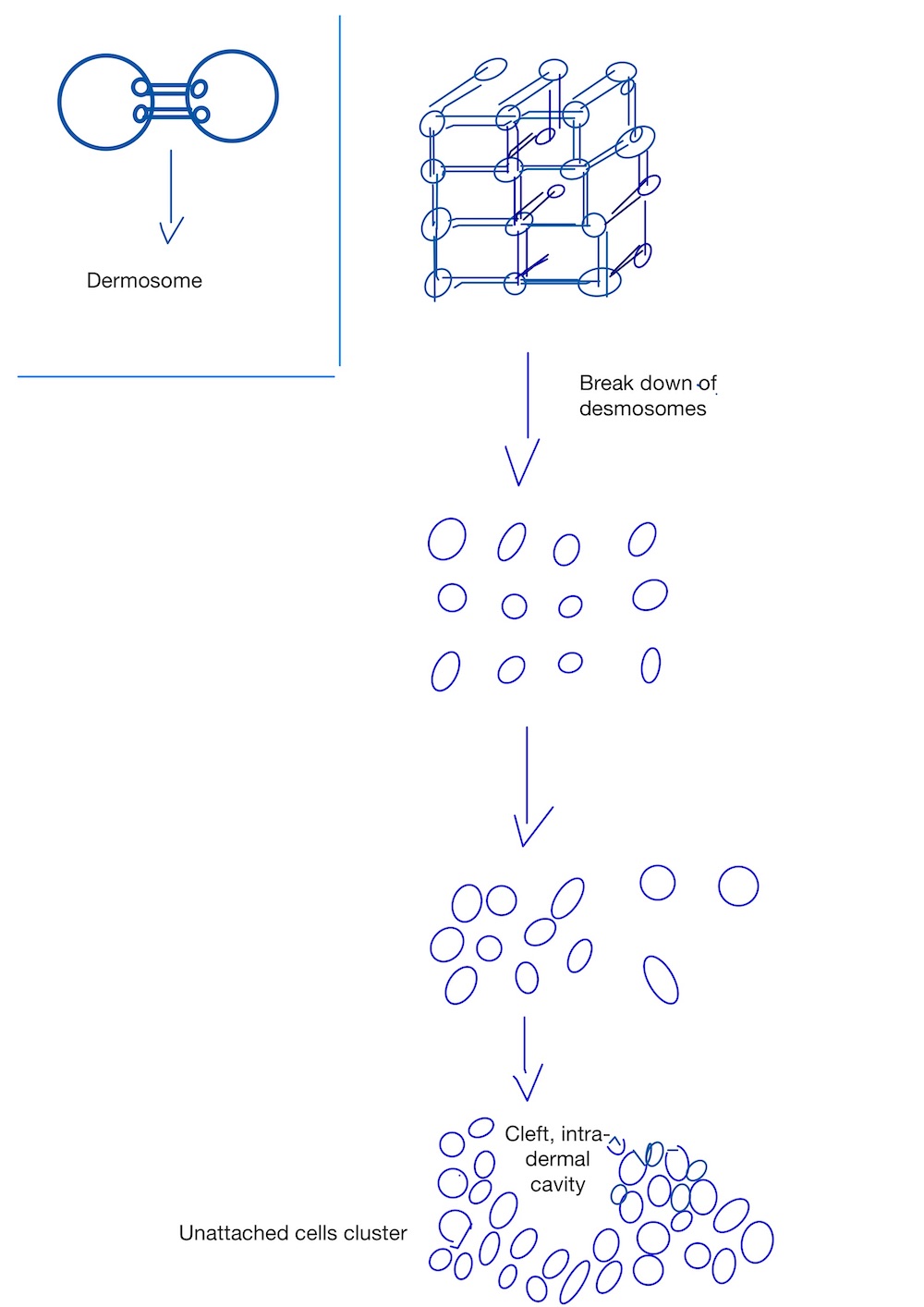PATIENTS’ DESCRIPTION of GROVER’s Disease
Before treatment, patients reported constant discomfort, red, open lesions which were itchy and also gave a stinging sensation. An overall burning, hot feeling was also reported on the skin surface of the affected area.

Appearance of GD
Always small red eruptions, lesions,
gashes which do not
heal for long periods.
In some cases these eruptions crust and
then break out again.

The sensation is
of the effected skin is similar to having a sunburn. The GD area is dry, feels like burning, even hot to the touch. Stinging, prickly, tingling sensations come and go, like bumping into a cactus.
SCIENTIFIC DESCRIPTION of GROVER’s Disease
Grover’s Disease is a benign, non-contagious condition of unknown origin.
Appearance of the disease: 1-3mm monomorphous, scaly, erythematous papulovesicular outbreaks on the trunk, or on the back. The mucous membrane and acral sites are spared.
Characteristics of Grover’s Disease:
Acantholysis is the primary pathological change occurring in pemphigus and its variants such as Grover’s disease.
ACANTHOLYSIS is defined as the loss of coherence between epidermal cells due to the breakdown of intercellular bridges, called desmosomes.
The cells remain intact but are no longer attached to each other.
Cells tend to acquire the smallest possible surface area.
Cells become rounded, resulting in intra-epidermal clefts, vesicles and bullae.
Schematic diagram of Acantholysis

ACANTHOLYSIS CLASSIFICATION
Acantholysis is classified as Primary or Secondary.
Grover’s Disease belongs the primary acantholysis group along with:
Haily-Haily disease (HHD),
Darier’s Disease (DD),
Staphylococcal scaled skin syndrome (SSSS),
Bullous impetigo,
Pemphigus vulgaris
Pemphigus foliaceus and their variants.
In case of Primary Acantholysis Dissociation and disintegration of desmosomes leads to the separation of keratinocytes. Thus, in these diseases, acantholysis is the primary event leading to the formation of intra-epidermal cavities and hence the manifestations of the disease.
